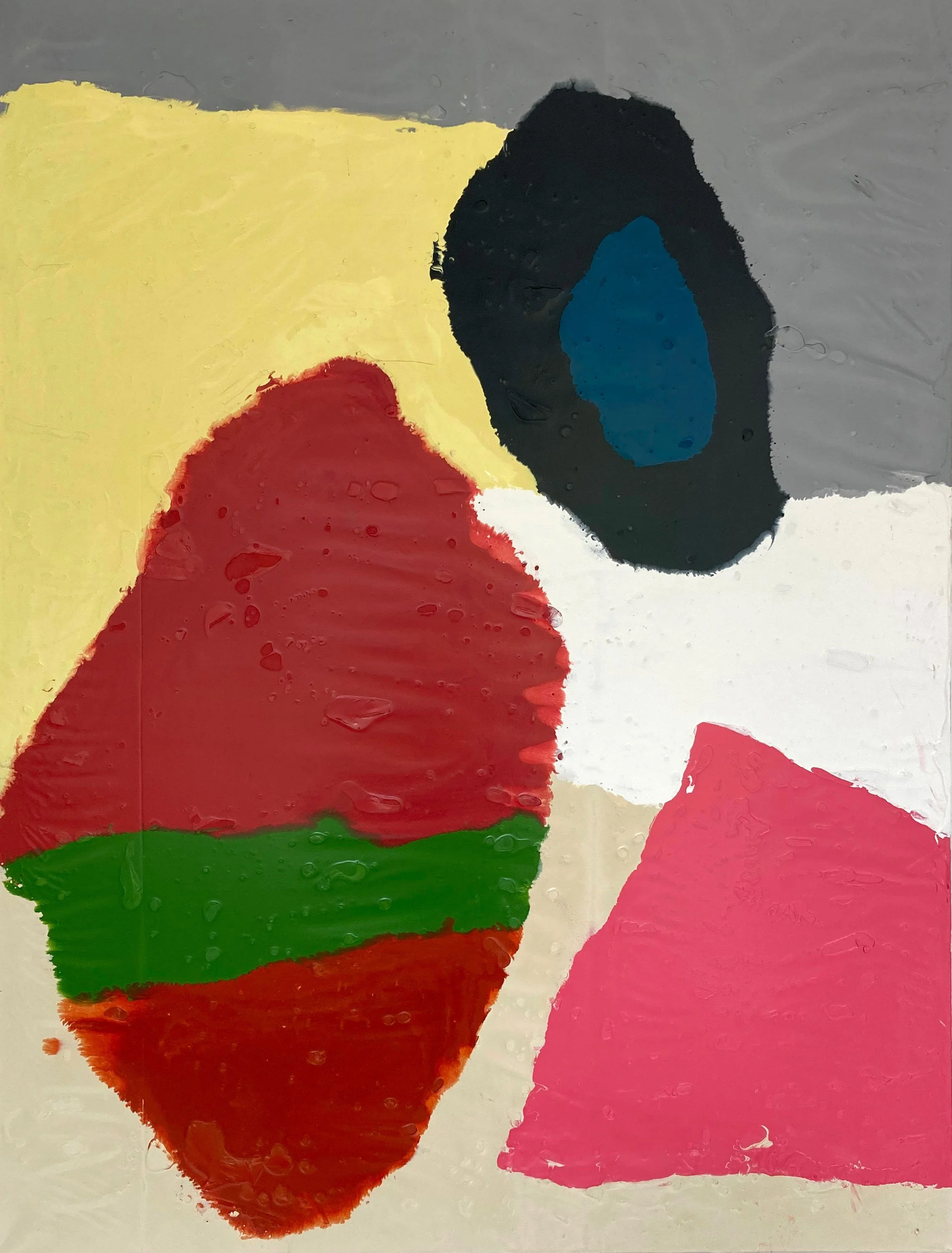Equilibre. Lea Krebs - Jessica Russ - Rebekka Steiger
12 June — 4 September 2021
Unlike any other genre of the visual arts, painting looks back on a long history that is just as steeped in tradition as it is subject to change. Over the centuries, its artistic tendencies have fluctuated between a means of representing the visible world and a purely aesthetic experience. With the rise of modern photography, the end of painting has been repeatedly proclaimed, inevitably raising the question of its current relevance with regard to the present day. An implicit answer may be today’s flourishing interest in the broad spectrum of painterly possibilities as well as the continuous search to explore form, color, and surface. In the exhibition Equilibre, three young Swiss artists – Lea Krebs, Jessica Russ, and Rebekka Steiger – are in pursuit of this fragile balance.
Through their works, the three young artists investigate the unbridled potential of contemporary painting. Based on independent, process-driven approaches, guided by chance, intuition, experimentation, and concise interventions, an extensive yet distinct vocabulary of color and form emerges, which each artist continues to develop in their own way. While the three artistic positions lead to expressive, freestanding, and differentiated outcomes, they continue to share similar conceptual origins. With the works on display, Equilibre does not only present the principle of painterly balance through three contemporary artists, but also brings their formal differences into accord.
The series of works by Lea Krebs (*1984 in Aarau, lives and works in Biel/Bienne) are characterized by her particular technique. She casts the material properties of color as the protagonist in her artistic work and studies its behavior on different surfaces. To this end, she first pours several layers of paint onto a sheet of plastic, which is then covered with the image carrier. After the acrylic lacquer starts to dry, the canvas or paper is removed, leaving clear traces of its creation. Due to this procedure, dense, relief-like surfaces emerge, which evade the artist’s direct intervention. By contrast, Lea Krebs deliberately chooses specific colors and their formal relationships to one another. Rough sketches and a multitude of material experiments precede the works in each case, resulting in abstract color topographies based on “guided coincidences”. While initially conceived as explorations on paper and later continued on canvas, the artist began casting individual form fragments with keramine and acrylic lacquer two years before. The slightly overlapping yet open array on a narrow shelf, shows how her painterly understanding of form and color unfolds beyond the rectangular picture plane.
The paintings of Jessica Russ (*1988 in Nyon, lives and works in Lausanne) are strikingly systematic. Her artistic process also deals with the layering of specific colors. With near graphical precision, her works all but seem to contradict the actual means of creation through brushes and acrylic paint. While the artist first researches and creates her paintings digitally, away from the studio, in a subsequent step she transfers the shapes onto the canvas. Again, an element of chance intervenes, as Jessica Russ sources the specific colors from the remnants of the mixtures used in her previous works. Fragments of various entities meet individual excerpts of organic and geometrical structures alike – similar to a mental landscape, which continuously fluctuates between abstraction and figuration. The often-recurring forms are superimposed by subtle lines. They gently roam through the paintings, as if the artist were exploring her own canvases more closely in the sense of uncharted terrain. Specific sections are additionally outlined, while, in some places, the line takes on a life of its own by forming new shapes. The rigid flatness thus challenges the dynamic impulses of the line. As a result, Jessica Russ places two movements, two dimensions, and two temporalities in a color-balanced equilibrium.
The expansive canvases of Rebekka Steiger (*1993 in Zurich, lives in Zurich, works in Lucerne and Beijing) draw on a wide range of different painterly tools and techniques: the artist uses oil paint and gouache, as well as tempera, ink and pastel, whose specific properties decisively affect the way they are applied and their resulting impact. Once again, chance and intuition play a leading role, as Rebekka Steiger initially allows the inherent materiality of paint to take its own course. Through various experiments, such as tilting the image carrier, the liquid ink leaves its own traces, which the artist ultimately investigates. Empty spaces are sometimes filled, while other parts are painted over, expanded, and emphasized. This dichotomy gives rise to countless pictorial spheres, whose captivating, luminous colors not only refer to their own essential medial properties but are equally characterized by recurring elementary forms. Like a distant memory or fleeting mirage, outlines of landscapes, mountain ranges or specific figures reappear, along with abstract shapes such as circles, stripes, lines, and rectangles. Faintly flickering and yet fully explicit, the paintings allow a counterbalanced coexistence of flatness and depth, proximity and distance, reality and fiction.
— Marlene Bürgi
Rebekka Steiger rondeau, 2020 Gouache, oil, tempera, oil pastel and pencil canvas 240 x 200 cm
Rebekka Steiger loin d'équilibre, 2019 Gouache, oil, tempera, oil pastel and pencil canvas 170 x 240 cm
Lea Krebs Untitled, 2018 Acrylic paint on canvas 127 x 96 cm
Lea Krebs Plaquettes, 2019 Ceramic and acrylic paint Various sizes, 16 pieces
Jessica Russ SoundCloud, 2020 Acrylic on canvas 80 x 90 cm
Jessica Russ Electric Reunion, 2019 Acrylic on canvas 80 x 90 cm











